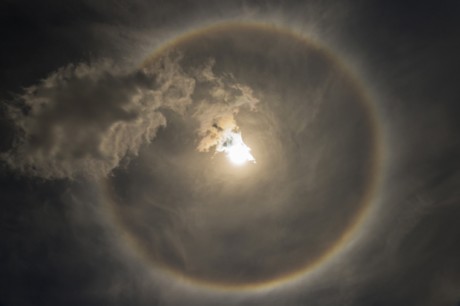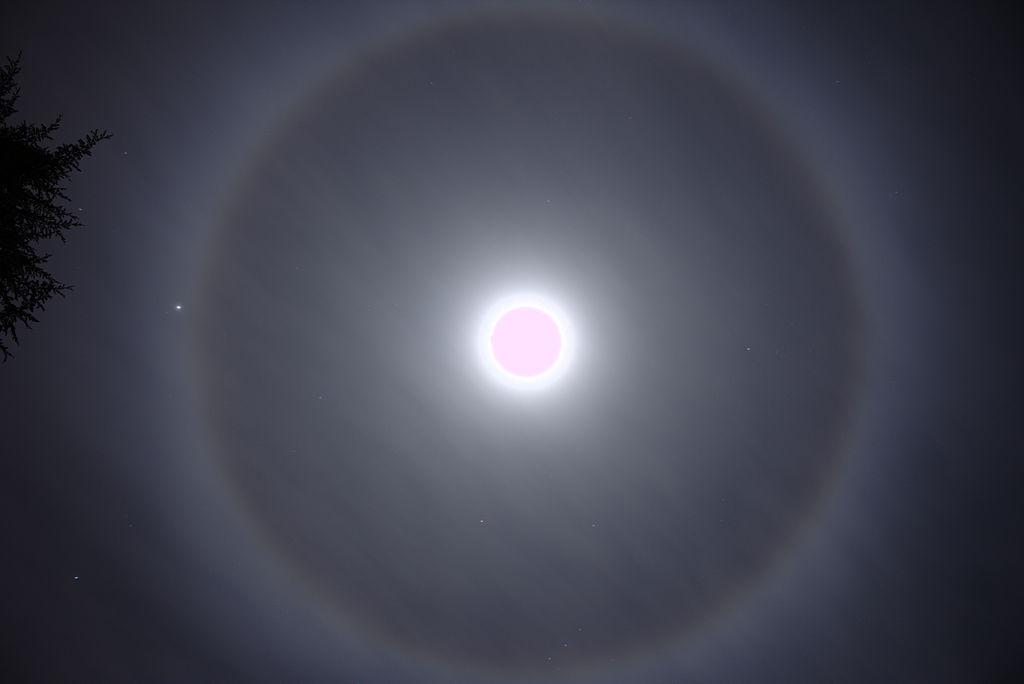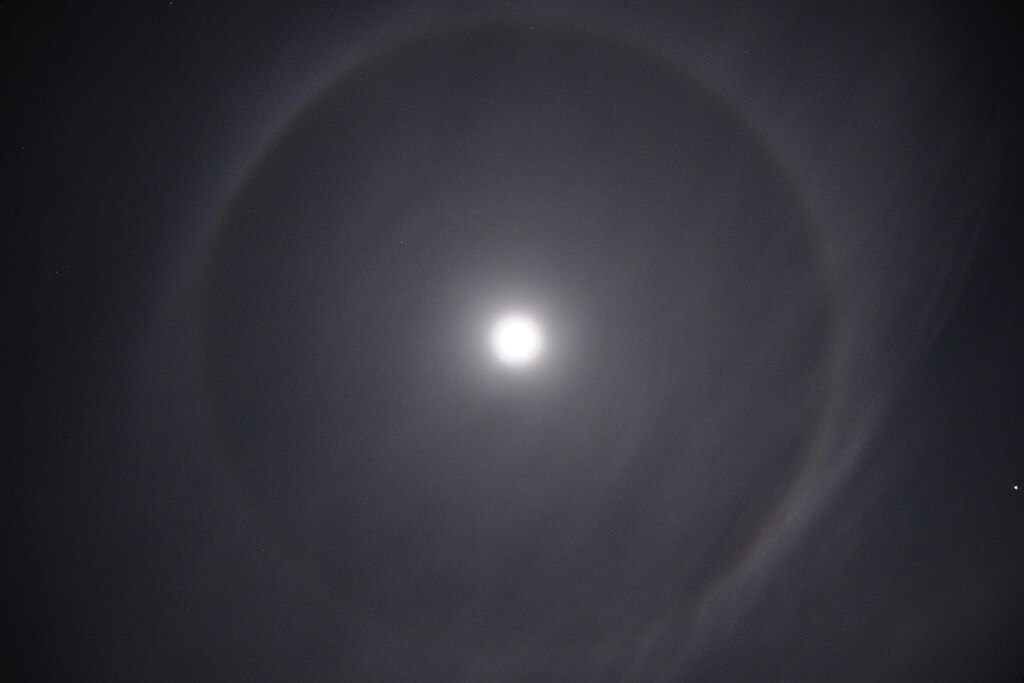Haha so they don't have any idea what is going on with our sun, some of them feel amazed, curious, and confused.
Here is the explanation of the rainbow ring, or Halo
A halo (from Greek ἅλως, halōs; also known as a nimbus, icebow or gloriole) is an optical phenomenon produced by light interacting with ice crystals suspended in the atmosphere, resulting in a wide variety of colored or white rings, arcs and spots in the sky. Many halos are near the Sun or Moon, but others occur elsewhere or even in the opposite part of the sky. Among the most well known halo types are the circular halo (properly called the 22° halo), light pillars and sun dogs, but there are many more; some of them fairly common, others (extremely) rare.
 |
| halo around the sun in Padang, Indonesia Photo is ownwork by Titoreds |
The ice crystals responsible for halos are typically suspended in cirrus or cirrostratus clouds high (5–10 km, or 3–6 miles) in the uppertroposphere, but in cold weather they can also float near the ground, in which case they are referred to as diamond dust. The particular shape and orientation of the crystals is responsible for the type of halo observed. Light is reflected and refracted by the ice crystals and may split up into colors because of dispersion. The crystals behave like prisms and mirrors, refracting and reflecting light between their faces, sending shafts of light in particular directions.
 |
| Sun halo in New York captured by (C) Richard Silver |
Atmospheric phenomena such as halos were used as part of weather lore as an empirical means of weather forecasting beforemeteorology was developed. They often do mean that rain is going to fall within the next 24 hours as the cirrostratus clouds that cause them can signify an approaching frontal system.
 |
| A 22° halo around the moon in Atherton, CA.(c)Stephen Balaban |
This is all but a meteorological phenomenon, This optical phenomenon can occur both around the sun and the moon, and is produced when tiny ice crystals contained in high cirrostratus clouds get hit by the sun’s light. Because of the hexagonal structure of the ice crystal , these particles refract light twice (on the way in and way out) bending the light approximately 22-degrees from its intended path and producing a ring of light around the sun that goes from red (~21.54°) on the inside to blue (~22.37°) on the outside. This is why the phenomenon is also sometimes referred to as a 22 degree-halo.
While the beautiful sight may complement the springtime weather, the sun halo is not limited to a certain season and can happen anytime, anywhere, depending on the viewer's vantage point and the sun's position. However, the occasional sighting -- similar to a rainbow -- is more common in the fall, winter and spring "when the northern jet stream descends southward, drawing down Arctic air masses," NASA notes.
Gallery
 |
| 22° halo observed in Portland Oregon, April 28, 2014 at 3:53 pm. |
 |
| 22° halo around the Moon, Graz, Austria, October 23, 2010. |
source :


Tidak ada komentar:
Posting Komentar